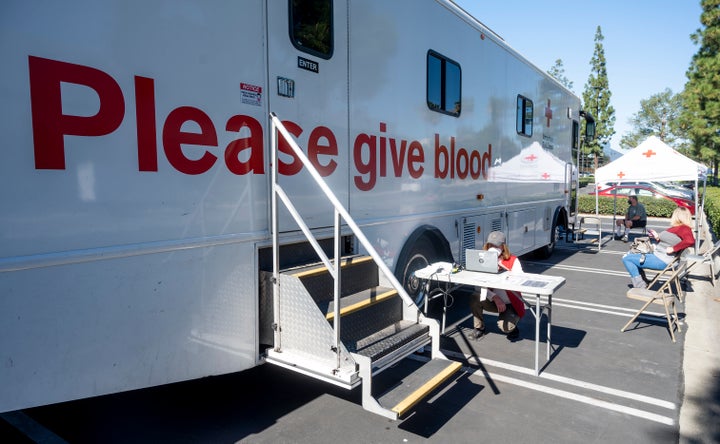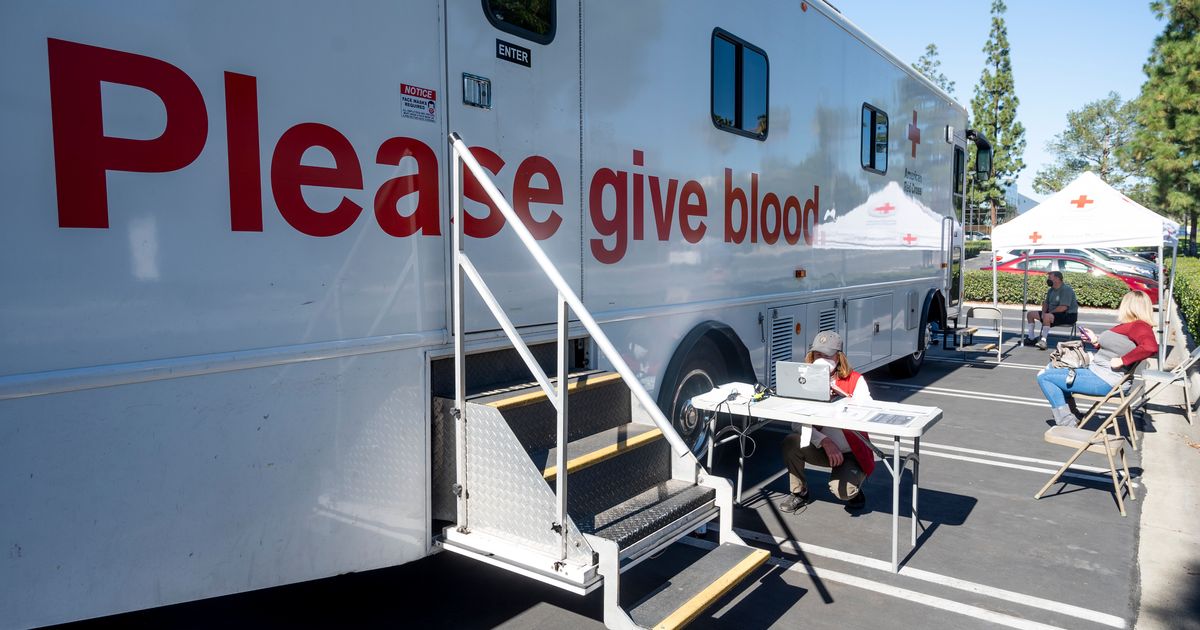The American Red Cross’ national blood supply has dropped to critically low levels, the organization said Monday, with back-to-back climate disasters and summer activities being blamed for a recent decline in donations.
The organization’s blood supply, which is said to make up roughly 40% of the nation’s overall blood supply, has fallen by nearly 25% since last month. Blood product distributions to hospitals currently outpace the number of blood donations coming in, the Red Cross said.
Hurricane Idalia, which ripped through the southeastern U.S. late last month initially as a Category 3 storm, resulted in more than 700 units of blood and platelets going uncollected. The busy summer travel season and back-to-school activities also contributed to a 30,000 donation shortfall last month, the organization said.

MediaNews Group/Orange County Register via Getty Images via Getty Images
The nonprofit said it’s now monitoring Hurricane Lee and its potential to impact local communities and planned blood drives in the northeast later this week.
“The need for blood is constant,” Pampee Young, the American Red Cross’ chief medical officer, said in a statement. “Every two seconds, someone in the U.S. needs blood ― an often-invisible emergency that the rest of the world doesn’t see behind closed hospital doors. Now, that urgency has only heightened.”
Despite this need, just 3% of the U.S. population donates blood each year, according to America’s Blood Centers, which supplies roughly 60% of the nation’s blood supply through independent, community-based blood centers.
“A single donation can help two or more patients in need, and each donation can be separated into more than one blood product, including red blood cells, plasma, and platelets,” America’s Blood Centers said in a recent statement recognizing Sickle Cell Awareness Month, which is observed globally in September.
Individuals with this blood disorder, which affects around 100,000 people in the U.S., often require regular blood transfusions to help manage the disease.
Like the Red Cross, America’s Blood Centers said the blood centers it works with are also seeing “lower than ideal” blood inventories, similarly due to the summer months and natural disasters. They have still been able to meet patient demand, however, a spokesperson for America’s Blood Centers told HuffPost on Monday.
“That being said, there are concerning trends across the country that must be addressed, including fewer first-time donors, donors under the age of 50, and school and business-based blood drives,” said America’s Blood Centers communications director Jeff Gohringer in an email.
Last year, the Red Cross also reported a national blood crisis during what was called the worst blood shortage in over a decade.
The COVID-19 pandemic was blamed for disrupting donor turnout, canceling blood drives, creating staffing challenges and causing misinformation about donor eligibility. America’s Blood Centers reported at the time that 34% of the nation’s community blood centers had a one-day supply or less of blood available, leading to trauma centers closing, surgeries being delayed and chemotherapy patients having to postpone treatment.

